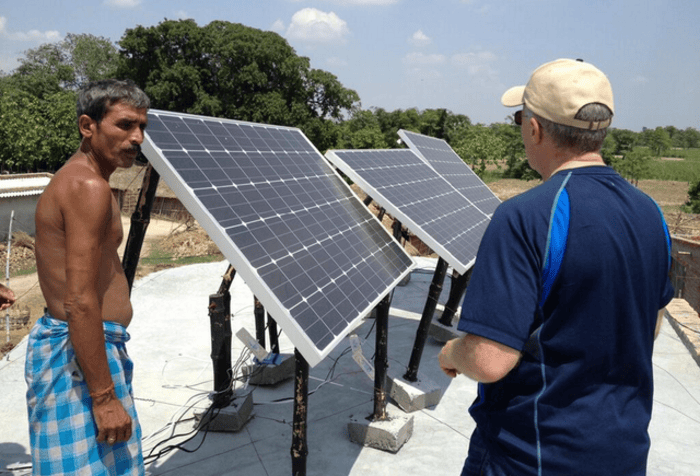While renewable energy accounted for 37% of India’s total generation capacity, it contributed only 18% to the actual power mix, according to a new analysis by Climate Action Tracker.
India’s renewable energy installations grew, but actual electricity generation from these sources remains low, a mismatch driven by soaring demand, extreme weather, and storage limitations, reported Down to Earth.
The analysis found that renewables made up 37% of India’s installed generation capacity. However, they contributed only about 18% to the electricity generated. As of 2023, India installed around 175 gigawatts (GW) of renewable capacity, including 73 GW of solar, 45 GW of wind, 47 GW of hydro and 10 GW of bioenergy. However, average annual generation over the past five years from wind and solar stood at just 11 GW, compared to 3.9 GW for coal.
The main reason for the gap was the country’s rising electricity demand due to extreme heat. Power consumption rose by 14% in May 2024 compared to the same month in 2023, prompting increased domestic production and imports of coal and fossil gas. As a result, in comparison to renewables, the latter has a higher share in the energy mix.
India Adds 7 GW of Solar Capacity in Q1 2025, Down 25% YoY
India added 6.7 GW of solar capacity in the first quarter (Q1) of 2025, according to Mercom.
The numbers reflect a 25% year-over-year (YoY) decline compared to the 9 GW added in Q1 2024, the report stated, adding that solar installations were also down 14% from the nearly 7.8 GW added in Q4 2024.
The outlet noted that of the total capacity added, 5.5 GW came from large-scale solar projects, with open access installations contributing nearly 19.8% of the new capacity. However, large-scale solar installations dropped 15% quarter-over-quarter (QoQ) and 36% YoY.
The report attributed slower additions to rising cost of domestically manufactured modules, limited availability of domestic content requirement (DCR) modules, and the lack of sufficient substation and transmission infrastructure for power evacuation.
Shortage of domestically manufactured DCR modules is hampering project execution. Although new manufacturing units are in the pipeline, meaningful capacity increases may not materialize until next year. Despite the headwinds, solar accounted for 54% of the 12.3 GW of new power capacity added in Q1 2025.
India’s Reliance to start solar module factory this year
Reliance Industries will start its solar photovoltaic modules factory this year, a company executive said on Thursday. “We are today building three bigger factories… in order to produce clean energy requirements,” said Partha P Maitra, of Reliance Industries to Reuters.
Reliance aims to eventually scale up solar module capacity to 20 GW per year, Maitra said. Its battery and micro power electronics factory will start next year, he said. “If it happens we will be the no. 2 solar PV producer in the world. We will produce roughly 14% of total solar PV modules outside China,” the executive said.
About The Author
You may also like
Non-Fossil Fuels Generates One-Third of India’s Electricity in 2025
India on track to achieve 2030 clean energy target
India to add 45GW solar capacity in FY 2026: Study
Government Proposes for ALMM Expansion for Solar Backward Integration
China’s renewable energy expansion can fuel global energy transition: Report

